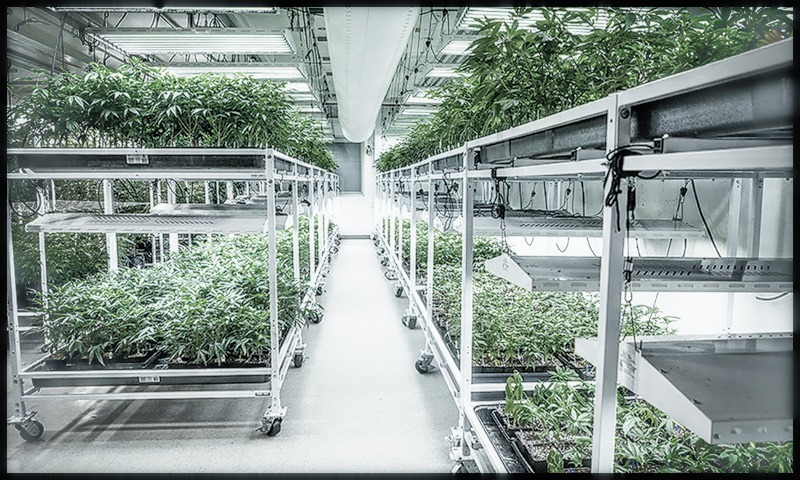Table of Contents
Last Updated on April 27, 2023 by Team Spinfuel
Grow room automation technology is one of the cannabis industry’s fastest-expanding areas. This booming sector is not restricted to large-scale industrial operations; it also offers options to smaller home cannabis farmers who want to save labor while enhancing efficiency and control of their crops.
Adopting automation when gardening at home for personal consumption has several advantages. Greater control is important to some people while others prefer to let their Blue Zushi strain unattended without hiring a gardener sitter.
How to Automate Your Grow Room
There are various methods for home growers to use grow room automation technology in their gardens, regardless of budget or scale, and many options are surprisingly basic and affordable. Here are four ways that home you can use automation to take your grow room to the next level:
Timers
Timers are the first step that farmers may take to automate their indoor gardens. Small-scale cultivators can use timers for various duties, and switching from manual control can be cheap. When linked to lights, fans, pumps, and other temperature control devices, a single simple analog timer can cost as little as $10 and provide a variety of options. This is an excellent tool for people wishing to save effort and time spent on fundamental repetitive chores.
A series of timers may need to be more adequate to allow gardeners to leave their gardens unattended for an extended time, but it can minimize the number of trips to the garden.
Many timers include numerous inlets, allowing several temperature control elements to run on the same schedule. These timer systems are essential for setting up gardens with various lights and fans to save gardeners from repeatedly manually turning devices on and off.
Digital timers are ideal for more complicated gardens since they allow many schedule settings to be preset over time. Digital timers, for example, may configure fans, pumps, and CO2 systems to run at predetermined intervals throughout numerous schedules without operator intervention.
Total Climate Control in a Grow Room
Climate management is essential for indoor, greenhouse, and hydroponic gardeners to keep their plants functioning properly. For example, this autopilot digital environmental controller can monitor and adjust CO2, temperature, and humidity and log and save data on your garden.
This type of device is ideal for gathering data such as temperature and humidity spikes or dips and VPD (vapor pressure deficit) so that you can fully adjust their environment to meet the demands of their plants.
For example, this pH continuous monitoring system is meant to automatically monitor pH and TDS (total dissolved solids) levels throughout time. This tool will continuously test the acidity of your grow medium and the PPM levels to determine if your plants are receiving adequate nutrients.
This degree of control in the garden saves time and gives producers the advantage of knowing precisely where their garden climate levels are without getting their hands dirty.
Lighting Control in a Grow Room
Lighting automation in your grow room is the easiest approach to simplify one of your tasks. When it comes to managing lights, even the most basic timers function well. This is because, unlike other factors in a cannabis plant, the hours of light and darkness are quite predictable.
For example, temperature and air exchange rates may vary based on the circumstances. However, when it comes to lighting, the light schedule will most likely only be adjusted once during the entire grow—when it’s time to “flip” photoperiod plants from the vegetative to the blooming stage.
The most popular schedule during the vegetative stage is to provide your feminized seeds with 18 hours of light and 6 hours of darkness. A 12/12 cycle is the most typical during the blooming period.
Irrigation and Feeding Configurations in Your Grow Room
Watering and feeding in your grow room are more difficult to automate than climate control. This is because various cannabis plants within the same grow room may need varying amounts of water and nutrients based on microclimate patterns, genetics, and other variables.
Also, systems designed to auto-feed and irrigate properly are frequently sophisticated and costly. However, they do not certainly have to be.
Integrating a nutrient-feeding system into an automated irrigator is known as “fertigation,” and it has become standard in outdoor and climate-controlled commercial agriculture. Calculating and combining nutrients immediately through an irrigation system simplifies every part of a feeding plan.
There are various advantages to employing fertigation, including:
- Improved nutritional efficiency and accuracy.
- Reduced water consumption.
- Reduced nutrient leaching.
- Less labor is needed.
Is it Rewarding to Automate Your Cannabis Grow?
It all depends. For any size grow, some level of automation, like putting the lights and air pumps on a timer, is typically well worth it. Because the cannabis growth cycle might last several months, reducing strenuous and repetitive activities for very little money can only be beneficial.
Scalability is the most important decision factor when automating other aspects of your operation. A few plants in a grow tent can be readily managed without any automation; however, twenty plants in a grow room are far more difficult to maintain.
Home growers can benefit from automation beyond meters, timers, and automated feeding systems. The possibilities range from single plant grow buckets to fully controlled cabinet systems. Some systems are even intended to be completely managed by software on your smartphone.
Others include post-harvest dry and cure boxes, which keep your harvested buds at a consistent temperature and humidity. Also, trimming devices handle the time-consuming operation of manicuring and defoliating dried flowers. Regardless of your budget or expertise level, various automation options enable you to work smarter rather than harder on your home cannabis grow room.
Further Reading:
How To Mainline and Manifold Your Cannabis Plants
The Ideal Light Cycle for Cannabis at Different Growth Stages
Your Ultimate Guide To Cannabis Dispensaries, Headshops, And Collectives
How To Dry and Cure Cannabis in 2023









